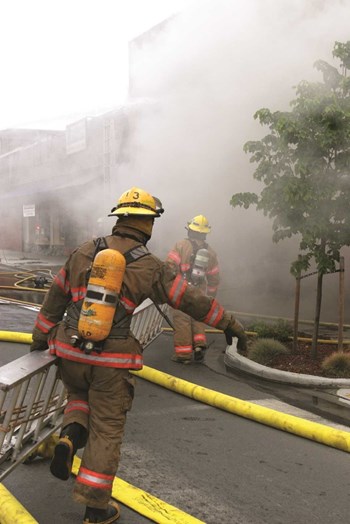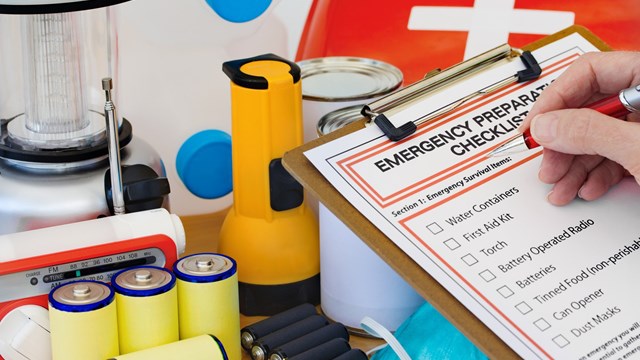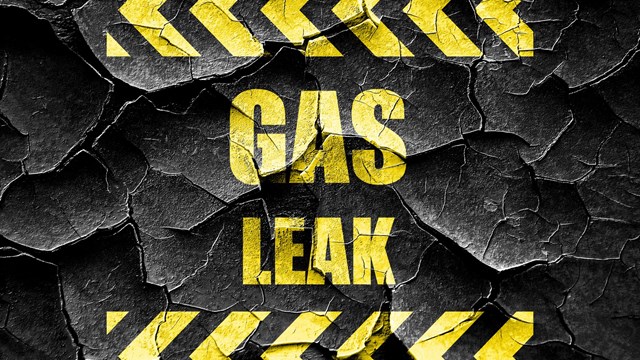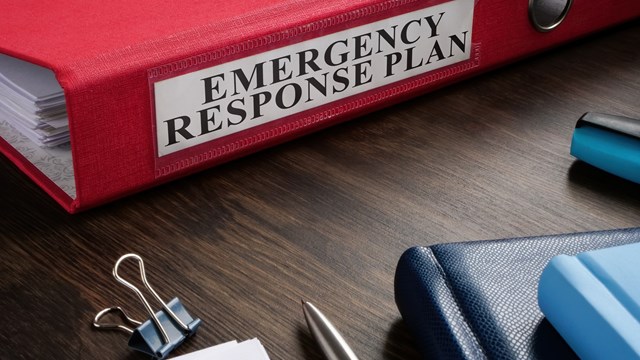
When Superstorm Sandy slammed into the East Coast at the end of October, hurling a record breaking 13 plus-foot water surge at New York City, knocking out power to millions of residents and devastating parts of Queens and Staten Island, how prepared was your community? Was your building well-stocked with emergency supplies? Was an evacuation plan in place? How about a communication system?
While the basics of preventing—and surviving—common disasters like fires or blackouts should be well known to anybody living in an urban apartment building, the reality is that each building is different, with varying physical equipment, divergent building materials, and unique escape routes for emergencies. Since in some worst case scenarios each building can become practically its own island during an emergency, it’s important for board members and management to devise customized emergency plans for the community. That way if the unthinkable happens, everyone can escape quickly and safely.
Plan First
Dan Wollman and Harry Smith, CEO and director of management, respectively, for Manhattan-based management firm Gumley Haft, recommend that a building’s board of directors establish a Disaster Management Plan, which should include a command center, rally points, and evacuation plans, to name a few items. The colleagues should know, since two of the buildings their company manages suffered frightening emergencies in the summer and fall of 2006. In the first emergency, an explosion in an Upper East Side condo destroyed the building—and in the second instance, a small plane crashed into a multifamily building.
While more common crises such as power outages in winter or flooding in low-lying areas are likelier for many residential buildings, the elements of readiness are the same for any emergency. Boards and managers can draw up customized emergency plans for their buildings, but they must know where to look to find the right information and with whom to work to make the plan implementable. Soliciting the advice and the involvement of the key players who are called on in a building emergency—such as the property manager, the superintendent, the building’s security chief and others—is the foundation of any effective plan. With some buildings, even more expert help may be needed.
Expert Consultations
In most cases, emergency response professionals will come to your door to help long before you need them to execute an evacuation. Though the American Red Cross is an organization known for helping those affected in the aftermath of disasters, the group also works to educate people in how to respond to disasters before they strike.
“We offer training for residents and also for condo owners,” says Michael Devulpillieres, a spokesman for the American Red Cross, Greater New York Region.
A course teaching the basics steps necessary for emergency preparedness in a multi-family building is offered free by the local American Red Cross. The course can be brought to a condo, where a Red Cross representative will teach residents how to prepare by having the right supplies, by being ready with a plan for emergencies, and by informing themselves during an emergency as well as before it. More in-depth planning also is available through the organization.
“We have corporate preparedness programs and will go in and do a full facility audit. We generate a report which includes recommendations,” says Lynn Duddy, training specialist for the American Red Cross. More information on the training can be found at www.myredcross.org, under “Take a Class.”
The auditing process includes evaluating the building’s emergency action plan, and creating one or selecting a better template for one if the current plan is unworkable. A full assessment of emergency preparedness plans requires knowing what type of equipment the building has, obtaining evacuation routes, and assessing individual residents’ special needs in an emergency,” Duddy says.
It’s about being what the organization calls “Red Cross Ready”—meaning having supplies on hand such as food, water, and medicine, to use in an emergency situation. You should have supplies such as flashlights, extra fuel (if necessary for a boiler or generator), and other necessities ready for when the emergency happens. A designated person in the building should be responsible for replacing those building supplies and ensuring that they are usable.
Preparedness also amounts to having a plan for residents to shelter in place—i.e., for them to stay put in the building for a while, if needed. A proper shelter in place plan should account for the building community’s needs for at least a period of three days. That means having adequate drinking water, food, batteries, flashlights, first aid supplies and even extra clothing for residents, in case it is needed.
For Vernon Rupert Grant, owner of Crisisology Group International, an emergency management and planning company, another start to preparing for an emergency involves reducing the possibility of a crisis. Working to prevent a fire should be the object of any building manager, and a manager can begin to accomplish this by eliminating building violations such as inoperable emergency exits, maintenance problems that could pose fire hazards, and the like.
“The superintendent is the first line of defense in a building emergency,” Grant says, adding that every building should have a Mitigation Plan, to lessen the possibility of an emergency.
A building’s manager and superintendent should walk around the building and assess the potential hazards. Such problems as a faulty fire alarm system, inoperable doors, windows that cannot be opened or fully closed, and bad wiring or plumbing that could create a hazard all must be noted when the super and manager investigate the building as part of their mitigation plan. After noting areas that should be addressed, the building staff should remedy those problems as fast as possible.
Jim Long, a spokesman for the FDNY, says preparation for fires and other disasters is each resident’s responsibility. “Having working smoke detectors and carbon monoxide detectors is crucial, as is proper signage, clear exits, fire drills when applicable, and above all, communication between building staff, management and occupants,” Long says.
Expecting Contingencies
The main types of emergencies a building should plan for are fires, power outages, and in some areas, flooding. Boards and management can begin to plan for emergencies affecting their building by simply getting the dialogue started.
“The superintendent should begin a dialogue around the neighborhood, and the property manager should be talking with other property managers, people in the neighborhood, and city officials about crisis and emergency planning,” Grant says.
To this end some neighborhood organizations are coordinating and planning for emergencies. The Association of Residential Boards, Ltd., and its president Jacqueline Watkins Slifka, have led the way in forming the Community Emergency Response Coalition (CERC), which is intended to better prepare New York City's communities to respond effectively to natural and man-made disasters. CERC will disseminate information and best practices and mobilize private businesses, schools, universities, corporations, cooperatives, condominiums and faith-based organizations to enhance New York City emergency programs; support hospitals and other institutions most affected by emergency events; and enable communities to be self-sufficient for as long as possible after a major disaster. The Association of Residential Boards is an organization representing co-ops and condos on the Upper East Side of Manhattan.
According to Slifka, this initiative actually grew out of a lack of interest, “When I first presented the idea nobody was interested in organizing CERC, there was no interest at all. I then spoke with Jim O'Connor with Douglas Elliman Real Estate and he helped to get the ball rolling.”
“The first part of the initiative was to create a pilot program in my neighborhood,” says Slifka, “an area from East 68th Street to East 71st Street from Park Avenue to York Avenue to demonstrate the potential benefits of advanced organization and communications among neighborhood residents in preparation for emergency events. We've gotten a lot of support. I've been working closely with Dr. Robert Bristow, chair of New York-Presbyterian Hospital's Emergency Management Committee.”
According to Slifka, the key to being prepared is communication and planning. There has to be a thoroughly mapped out plan and a clear strategy of communication. It has to be comprehensive, she says. Thankfully, her area was spared the wrath of the recent hurricane but that doesn’t mean that the planning was unnecessary.
Making the Plan
To approach emergency planning in a comprehensive way, assemble an emergency team, comprised of co-op or condo board members, the facilities manager, building security personnel, and the building’s superintendent or chief engineer. The people in charge of the group, and in charge during an emergency, should be trained in both CPR and first aid. The property manager should be the team leader during a crisis situation.
Individual residents of a building need to make preparations, and have an emergency kit, which Red Cross officials call a “Go Bag.” The bag should contain prescriptions, some food and water, money, clothes and a few other necessities. Regardless of a building’s evacuation plan, residents also may want to make their own exit plan, given the unique circumstances of many families. What if a disaster happens during the day, when mom is at home, and dad’s at work and the kids are at school? Each member of the family should know where they will meet if the building is evacuated or they are separated due to an emergency.
And one of the most important things to do during an emergency, is to stay informed, Devulpillieres says. But informing oneself can begin long before a crisis. Residents can visit www.nyc.gov to determine if their neighborhood is prone to flooding. They also can see whether their building will have a mandatory evacuation route, what the route will be, and where the nearest evacuation area will be located.
Residents need to recognize the necessity of having a plan for their pet, too. Where will they house their pet and who will care for it if they are evacuated?
It’s also a good idea to team with New York City’s Office of Emergency Management (OEM). They have developed neighborhood outreach through their Community Emergency Response Teams. Today, every community board in New York City has a CERT program, the largest of which is located in Battery Park City and boasts 400 members. OEM also has what’s called an “Advance Warning System,” which is designed to alert individuals with special needs to various types of hazards and emergencies affecting New York City.
During an emergency, the management team should know who is in the building and who is not. That understanding will be informed by crucial data the team compiles long before a crisis. Through a survey of the building, the team should know how many people live in the building, which of them have special needs or lack mobility and will need help evacuating, who has small children, who has pets, and who works from home. This evacuation list should include names, phone numbers, and apartment numbers of all residents.
Specific considerations may need to be made for a building’s “special-needs” residents, such as the elderly, ill or disabled individuals, or households with young children who might not be able to follow the same evacuation/emergency protocols as more able-bodied residents. To help such people, members of the management team, and/or a group of resident volunteers, must be designated to assist these folks in a crisis.
The evacuation list should be backed up remotely, not simply stored on-site. That way, if anything happens to the property manager’s computer in the building, the info can be sent directly to another laptop or device during an emergency.
Any residential building also should have rally points to go to in an emergency. Rally points are places away from the apartment building, but close to it, where residents will gather in an emergency to relax, deal with what happened, and plan a course of action. And just as having a small radio in your Go Bag is important to stay informed, rally points also are places where building management can distribute information to residents.
Crisis Management
Needless to say, a building’s management could be held liable if proper planning isn’t carried out and tragedy results due to an emergency. Preparedness is not an option. It is part of a management team’s fiduciary responsibility to the building.
Preparing for hurricanes, 100-year rainstorms or monumental blizzards, and other less-common emergencies, also should be a priority of the management team. This might seem obvious, given that two tornadoes actually struck New York City in early September 2012. So it is clear that such natural disasters, while rare, do happen, and neglecting to be ready for them could be a violation of a manager or board member’s responsibility to the community.
Samantha Burns, marketing director for Woodbury, New York-based insurer Mackoul & Associates says that to prepare for hurricanes and other crises, every resident should have a list of contact information handy. The list should have info for the emergency management office, police, hospitals, local utilities and the homeowner’s insurance agent.
Residents should take inventory of their possessions, noting all major household items and valuables. This list will be essential for insurance purposes, if possessions are destroyed or damaged. Residents also need to protect their important documents, by keeping copies of irreplaceable documents in a safe, dry place.
Jonathan Barnes is a freelance writer and a frequent contributor to The Cooperator. Associate Editor Liam P. Cusack contributed to this article.









Leave a Comment